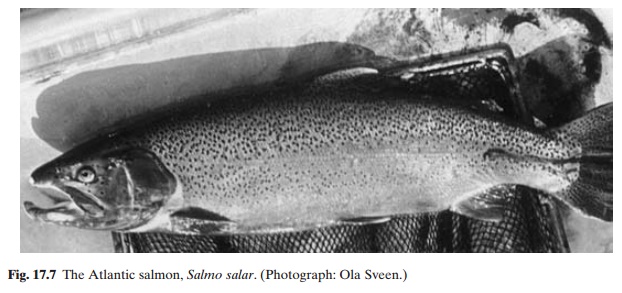Chapter: Aquaculture Principles and Practices: Trouts and Salmons
Grow out - Salmons
Grow-out
As indicated earlier, the most common method of culturing salmon to
market size is in floating sea cages or pens. Before transfer of the smolts to
cages or pens, it is the general practice to acclimatize them gradually through
intermediate salinities, over several months. Such acclimatization helps to
reduce mortalities during transfer to sea farms, and prevents the sudden shock
of transfer to sea water that otherwise affects feeding for weeks, and
therefore their growth during the first year at sea. Smolts are transported in
boats or by trucks to the site of grow-out farms, as convenient. Smolts
transported by sea are generally acclimatized before transport in sea water.
When transport is by truck through inland areas, smolts are carried

Stocking of cages and enclosures is under-taken in spring and harvests
taken after two or three years, depending on market requirements. The stocking
density of fish in each cage may vary between 10 and 35kg fish per m3 cage at harvest. As in the case
of rainbow trout, higher numbers are stocked initially and are thinned out
later as they grow in size. Besides adequate feeding and frequent monitoring of
the oxygen concentration of the water, the health of the fish is regularly
checked. Harvesting from cages is easy. The net is pulled up until the fish are
confined in a small volume of water, from which they are removed by dip nets.
The use of low grilsing strains and improved rearing strategies have eliminated
the need for grilse harvesting.
Related Topics